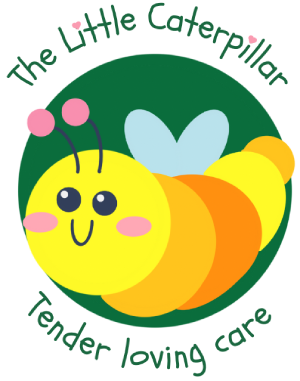Table of Contents
Introduction
Feeding toddlers can often be a challenging task for parents. Many young children exhibit fussy eating behaviors, which can cause concern and frustration for caregivers. Understanding the reasons behind fussy eating and implementing effective strategies to address this behavior can help parents ensure their children receive the necessary nutrition for healthy growth and development. This essay explores the causes of fussy eating in toddlers and provides practical solutions for parents, drawing on insights from The Little Caterpillar Playschool in Chennai, founded by artist Nikita Viswanath. The essay also discusses the role of early childhood education settings in promoting healthy eating habits.
Reasons Behind Fussy Eating in Toddlers
Developmental Factors
- Neophobia: Neophobia, or the fear of new foods, is a common developmental stage in toddlers. Around the age of two, children often become wary of unfamiliar foods, which can lead to picky eating behaviors. This aversion to new foods is thought to be an evolutionary trait that protects young children from ingesting potentially harmful substances.
- Autonomy and Control: Toddlers are in a stage of development where they seek independence and control over their environment. Food is one of the areas where they can exert their will, leading to fussy eating as a way to assert autonomy.
- Sensory Sensitivities: Some toddlers may have heightened sensory sensitivities, making them more selective about the textures, tastes, and smells of certain foods. This can result in a preference for familiar foods and a reluctance to try new ones.
Behavioral and Psychological Factors
- Learned Behaviors: Eating habits can be influenced by parental attitudes and behaviors. If parents are overly anxious or forceful about eating, children may develop negative associations with mealtime.
- Attention-Seeking: Toddlers may use fussy eating as a way to gain attention from their parents. Refusing food can become a method to elicit reactions and engagement from caregivers.
- Emotional States: A child’s emotional state can significantly impact their eating behavior. Stress, anxiety, or changes in routine can lead to reduced appetite and increased picky eating.
Environmental Factors
- Food Environment: The availability and variety of foods in the home environment play a crucial role in shaping eating behaviors. Limited exposure to a diverse range of foods can reinforce picky eating habits.
- Peer Influence: Toddlers often model their eating behaviors after those of their peers. If they observe other children rejecting certain foods, they may be more likely to do the same.
Strategies to Address Fussy Eating
Creating a Positive Mealtime Environment
- Consistent Mealtime Routine: Establishing regular meal and snack times helps create a sense of predictability for toddlers. Consistent routines can reduce anxiety and make mealtimes more enjoyable.
- Positive Role Modeling: Parents and caregivers should model healthy eating behaviors. When children see adults enjoying a variety of foods, they are more likely to try them.
- Minimizing Distractions: Reducing distractions such as television, toys, and electronic devices during meals helps children focus on eating and encourages mindful eating practices.
Encouraging Healthy Eating Habits
- Offering Variety: Regularly introducing new foods alongside familiar favorites can help children become more comfortable with trying different foods. Repeated exposure to new foods, without pressure, increases the likelihood of acceptance over time.
- Involving Children in Food Preparation: Involving toddlers in age-appropriate food preparation tasks, such as washing vegetables or stirring ingredients, can make them more interested in eating the foods they helped prepare.
- Using Positive Reinforcement: Praising children for trying new foods, even in small amounts, reinforces positive behavior and encourages them to continue exploring new tastes.
Addressing Sensory Sensitivities
- Gradual Introduction: Introducing new foods gradually and in small quantities can help children become accustomed to different textures and flavors without feeling overwhelmed.
- Sensory Play: Engaging children in sensory play activities that involve different textures and smells can desensitize them to various sensory experiences and reduce food aversions.
- Respecting Preferences: While encouraging variety, it is important to respect a child’s genuine dislikes. Forcing a child to eat something they strongly dislike can create negative associations with food.
The Role of Early Childhood Education Settings
The Little Caterpillar Playschool’s Approach
The Little Caterpillar Playschool in Chennai, founded by artist Nikita Viswanath, adopts a holistic approach to early childhood education, which includes promoting healthy eating habits. The playschool’s philosophy emphasizes creativity, exploration, and holistic development, which extends to its approach to nutrition and mealtime practices.
- Nutrition Education: The playschool integrates nutrition education into its curriculum, teaching children about the importance of a balanced diet and the benefits of different foods through interactive activities and storytelling.
- Healthy Snacks and Meals: The playschool provides nutritious snacks and meals that include a variety of fruits, vegetables, whole grains, and proteins. This ensures that children are exposed to a wide range of healthy foods.
- Positive Mealtime Environment: Mealtimes at The Little Caterpillar Playschool are designed to be relaxed and enjoyable. Children eat together in a communal setting, which fosters social interaction and positive eating behaviors.
- Parental Involvement: The playschool encourages parental involvement in promoting healthy eating habits. Workshops and informational sessions for parents provide guidance on how to support healthy eating at home.
Practical Tips for Parents
Setting Realistic Expectations
- Understanding Normal Behavior: Recognizing that fussy eating is a normal part of toddler development can help parents approach the issue with patience and understanding.
- Being Patient: It can take multiple exposures to a new food before a child accepts it. Parents should be patient and persistent without pressuring the child to eat.
- Avoiding Power Struggles: Mealtimes should not become a battleground. Avoiding power struggles over food helps maintain a positive and stress-free mealtime environment.
Encouraging a Healthy Relationship with Food
- Fostering Autonomy: Allowing children to have some control over their food choices, within healthy limits, can reduce resistance and make them more willing to try new foods.
- Creating Positive Associations: Associating mealtimes with pleasant experiences, such as family bonding and enjoyable conversations, helps create positive associations with food.
- Promoting Balanced Nutrition: Ensuring that children receive a balanced diet throughout the day, even if they are picky at specific meals, helps meet their nutritional needs.
Conclusion
Fussy eating in toddlers is a common concern for parents, but understanding the underlying causes and implementing effective strategies can help address this behavior. The Little Caterpillar Playschool in Chennai, founded by artist Nikita Viswanath, exemplifies how early childhood education settings can play a crucial role in promoting healthy eating habits. By creating a positive mealtime environment, encouraging healthy eating habits, and addressing sensory sensitivities, parents can support their children in developing a healthy relationship with food. Patience, persistence, and a holistic approach to nutrition can ensure that toddlers receive the necessary nutrients for their growth and development.
References
- Birch, L. L., & Fisher, J. O. (1998). Development of Eating Behaviors Among Children and Adolescents. Pediatrics, 101(3), 539-549.
- Cooke, L. (2007). The Importance of Exposure for Healthy Eating in Childhood: A Review. Journal of Human Nutrition and Dietetics, 20(4), 294-301.
- Galloway, A. T., Fiorito, L. M., Lee, Y., & Birch, L. L. (2005). Parental Pressure, Dietary Patterns, and Weight Status Among Girls Who Are “Picky Eaters”. Journal of the American Dietetic Association, 105(4), 541-548.
- Nicklaus, S. (2009). Development of Food Variety in Children. Appetite, 52(1), 253-255.
- Wardle, J., & Cooke, L. (2008). Genetic and Environmental Determinants of Children’s Food Preferences. British Journal of Nutrition, 99(S1), S15-S21.
- Warkentin, S., Mais, L. A., Latorre, M. R. D. O., & Carnell, S. (2018). Parental Feeding Practices and Child Weight: A Systematic Review of Prospective Studies. Obesity Reviews, 19(10), 1339-1355.
- Harris, H. A., Ria-Searle, B., Jansen, E., & Thorpe, K. (2018). What’s the Fuss About? Parent and Child Perspectives on Family Mealtimes. Appetite, 125, 410-417.
- Little Caterpillar Playschool. (n.d.). About Us. Retrieved from Little Caterpillar Playschool Website.



